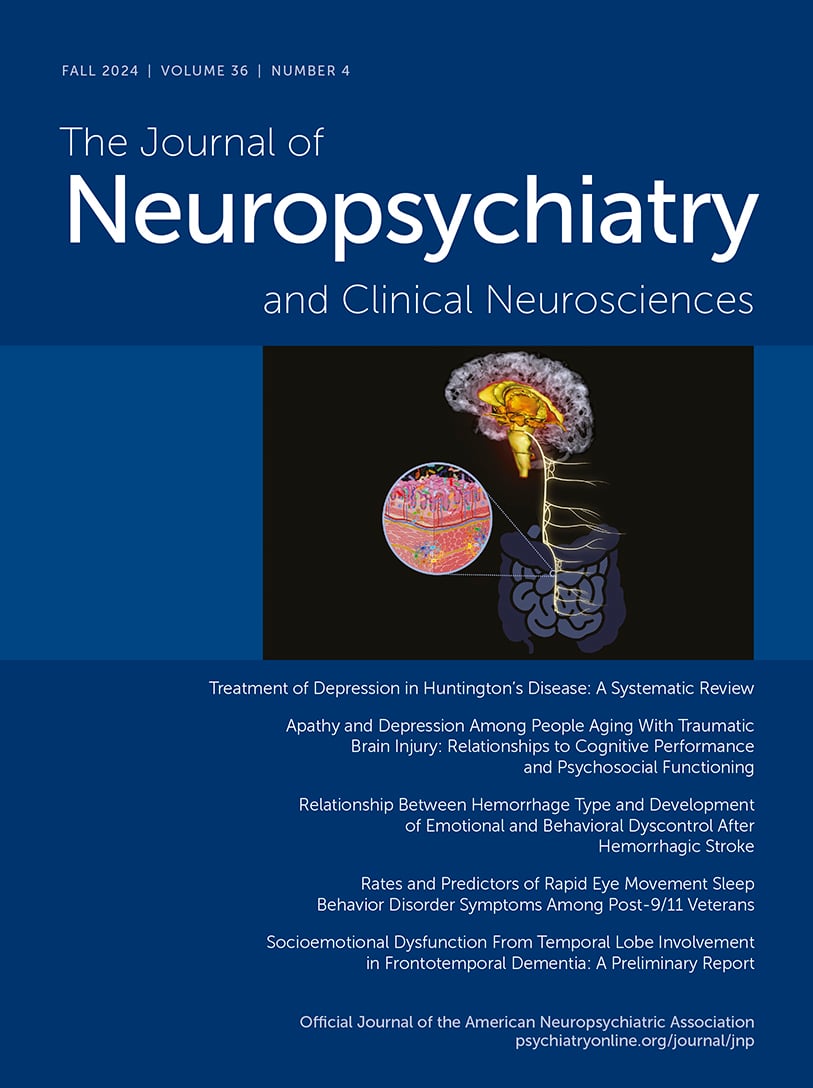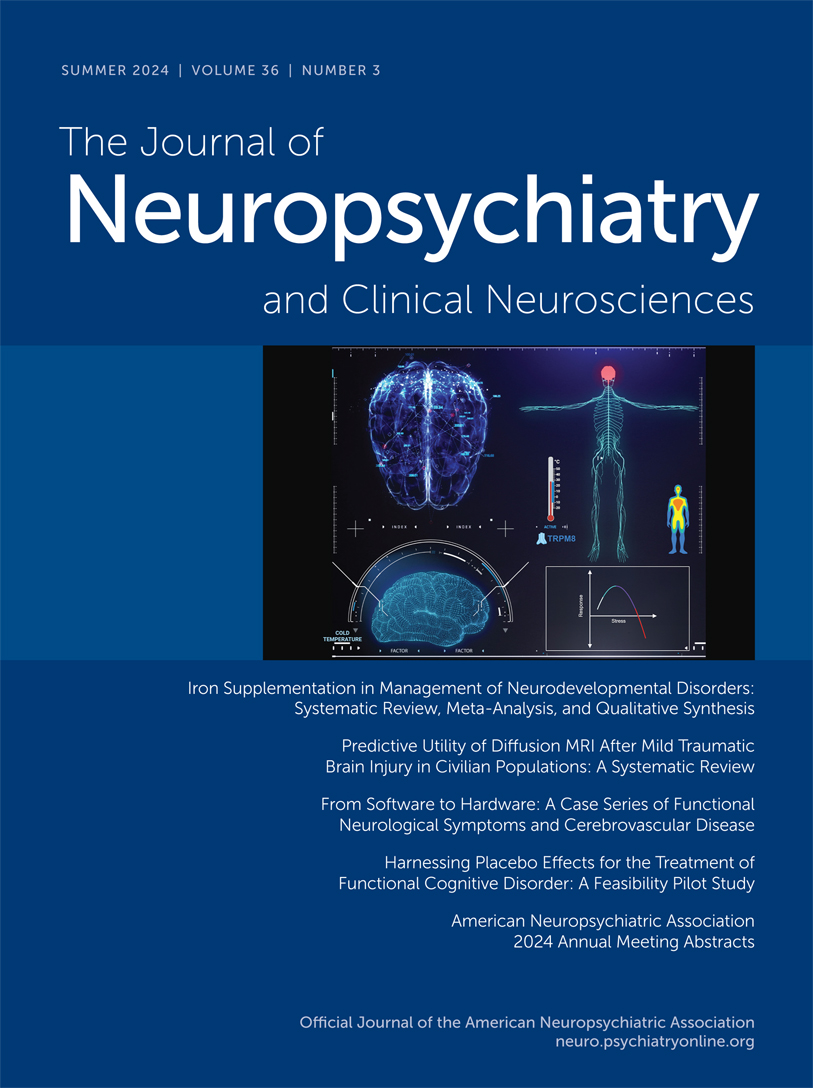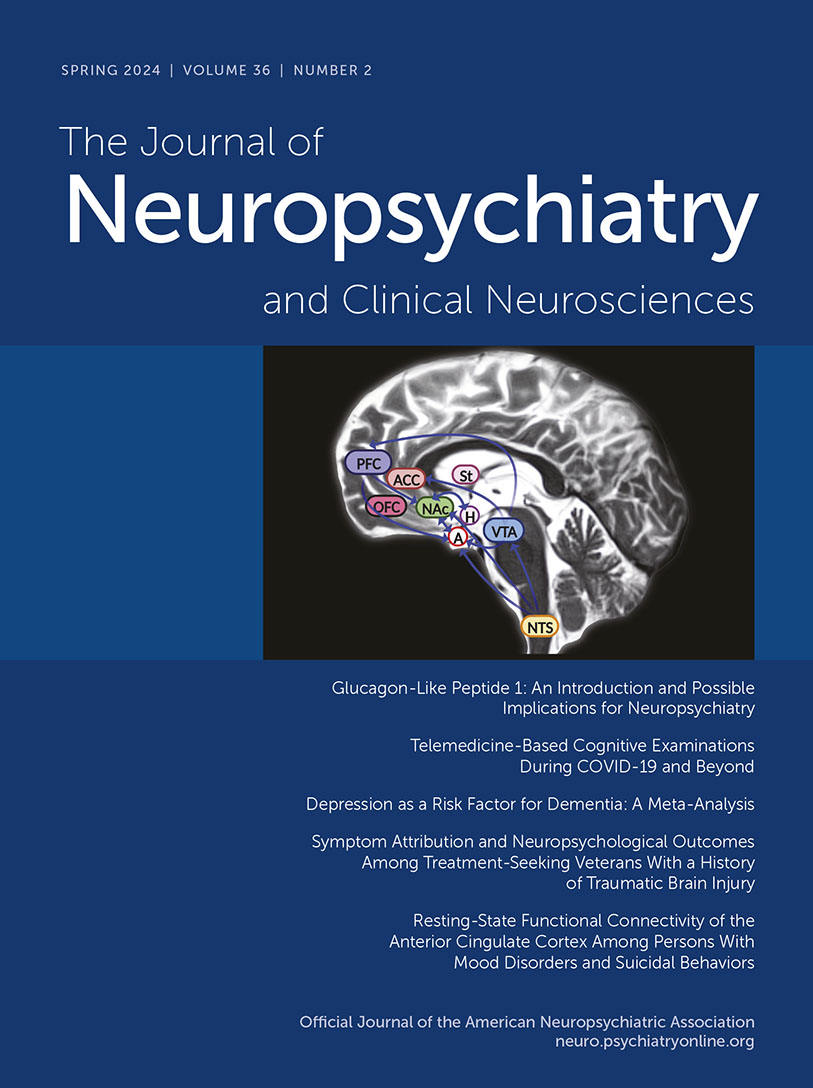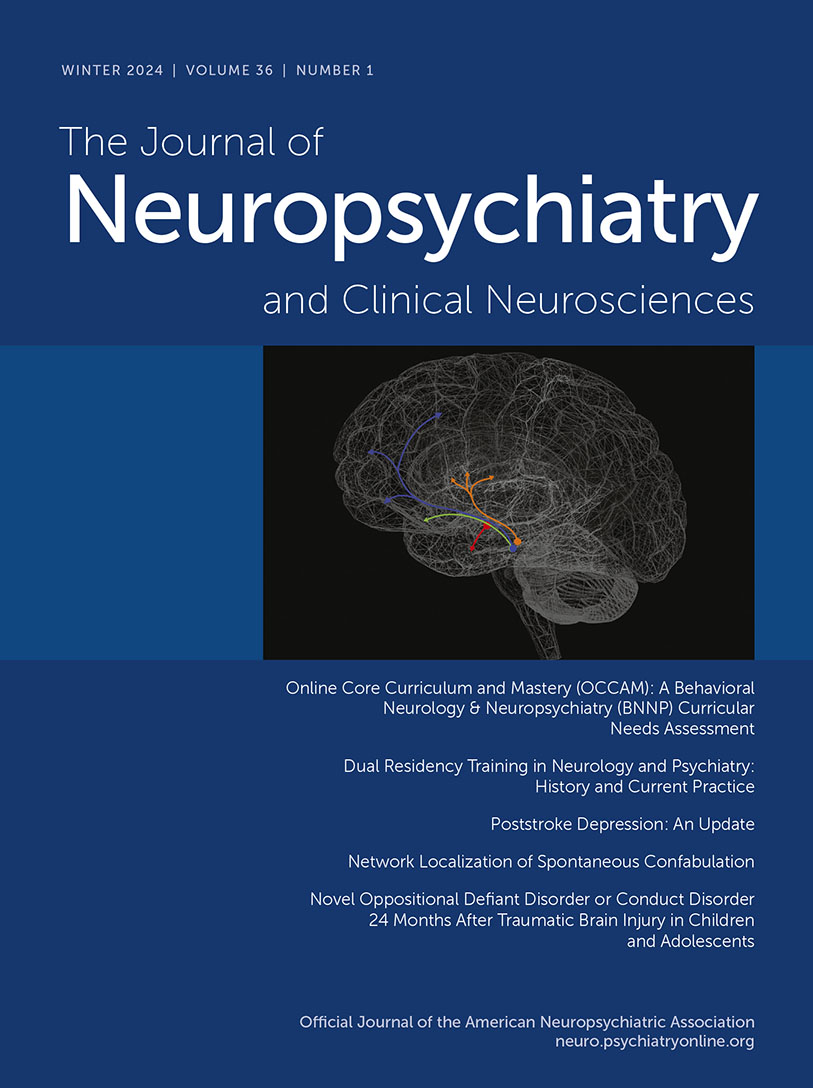The Journal of Neuropsychiatry and Clinical Neurosciences
- Volume 28
- Number 2
- April 2016
Windows to the Brain
Editorials
Special Articles
Publication date: 09 November 2015
Pages77–88The role of stress in the origin and development of depression may be conceived as the result of multiple converging factors, including the chronic effect of environmental stressors and the long-lasting effects of stressful experiences during childhood, ...
https://doi.org/10.1176/appi.neuropsych.15030053Regular Articles
Publication date: 09 November 2015
Pages89–96This study aimed to examine global and regional cerebral blood flow and amyloid burden in combat veterans with and without traumatic brain injury (TBI). Cerebral blood flow (in milliliters per minute per 100 mL) was measured by quantitative [15O]water, ...
https://doi.org/10.1176/appi.neuropsych.15050106Publication date: 16 November 2015
Pages97–103Diffuse axonal injury is a major form of traumatic brain injury. Neuropsychological assessments and high-resolution structural MRI were conducted using T1-weighted and diffusion tensor imaging. This study included 10 patients with diffuse axonal injury (...
https://doi.org/10.1176/appi.neuropsych.15070159Publication date: 30 December 2015
Pages104–111A factor structure underlying DSM-IV diagnoses has been previously reported in neurologically intact patients. The authors determined the brain regions associated with factors underlying DSM-IV diagnoses and compared the ability of DSM-IV diagnoses, ...
https://doi.org/10.1176/appi.neuropsych.15060150Publication date: 16 December 2015
Pages112–117Veterans with posttraumatic stress disorder (PTSD) underwent a systematic evaluation to determine which factors were associated with the degree of functional status. Demographic information, self-report scales, and symptom ratings performed by trained ...
https://doi.org/10.1176/appi.neuropsych.15070183Publication date: 16 November 2015
Pages118–123Cognitive impairment, anxiety, and depressive symptoms are common in multiple sclerosis (MS) and are known to interact in non-MS populations. This retrospective chart review examined this relationship in a relapsing-remitting MS population. A significant ...
https://doi.org/10.1176/appi.neuropsych.15070167Publication date: 16 December 2015
Pages124–130This study describes the prevalence, phenomenology, treatment, and outcome of neurological patients and psychiatric patients with catatonia at a tertiary neurological center. Clinical variables included nosological diagnoses and complications. Admission ...
https://doi.org/10.1176/appi.neuropsych.15090218Publication date: 09 November 2015
Pages131–137This study used fractional anisotropy (FA), a measure of diffusion tensor imaging, to analyze white matter abnormalities in 15 first-episode treatment-naïve patients with major depressive disorder (MDD) and 15 controls matched for age. An automated voxel-...
https://doi.org/10.1176/appi.neuropsych.15050120Publication date: 16 November 2015
Pages138–142In the present study, 24 nonmedicated patients with social anxiety disorder (SAD) were compared with 24 healthy control subjects to assess metabolite levels in the anterior cingulate, insula, caudate, and putamen using proton magnetic resonance ...
https://doi.org/10.1176/appi.neuropsych.15050115Clinical and Research Reports
Publication date: 30 December 2015
Pages143–146The association between current beta-1–selective beta-blocker use and cognitive function was evaluated in 722 patients with coronary artery disease without dementia. Beta-1–selective beta-blocker use was associated with worse incidental learning ...
https://doi.org/10.1176/appi.neuropsych.15040088Neuropsychiatric Practice and Opinion
Publication date: 01 April 2016
Pages147–152Neuropsychiatric disturbances associated with brain injury occur frequently and are a common cause of poor quality of life and caregiver burden. These disturbances can disrupt rehabilitation therapies and contribute to functional impairment if they are ...
https://doi.org/10.1176/appi.neuropsych.15060147Letters
Past Issues
View Issues Archive
Vol. 36 | No. 4

Vol. 36 | No. 3

Vol. 36 | No. 2
